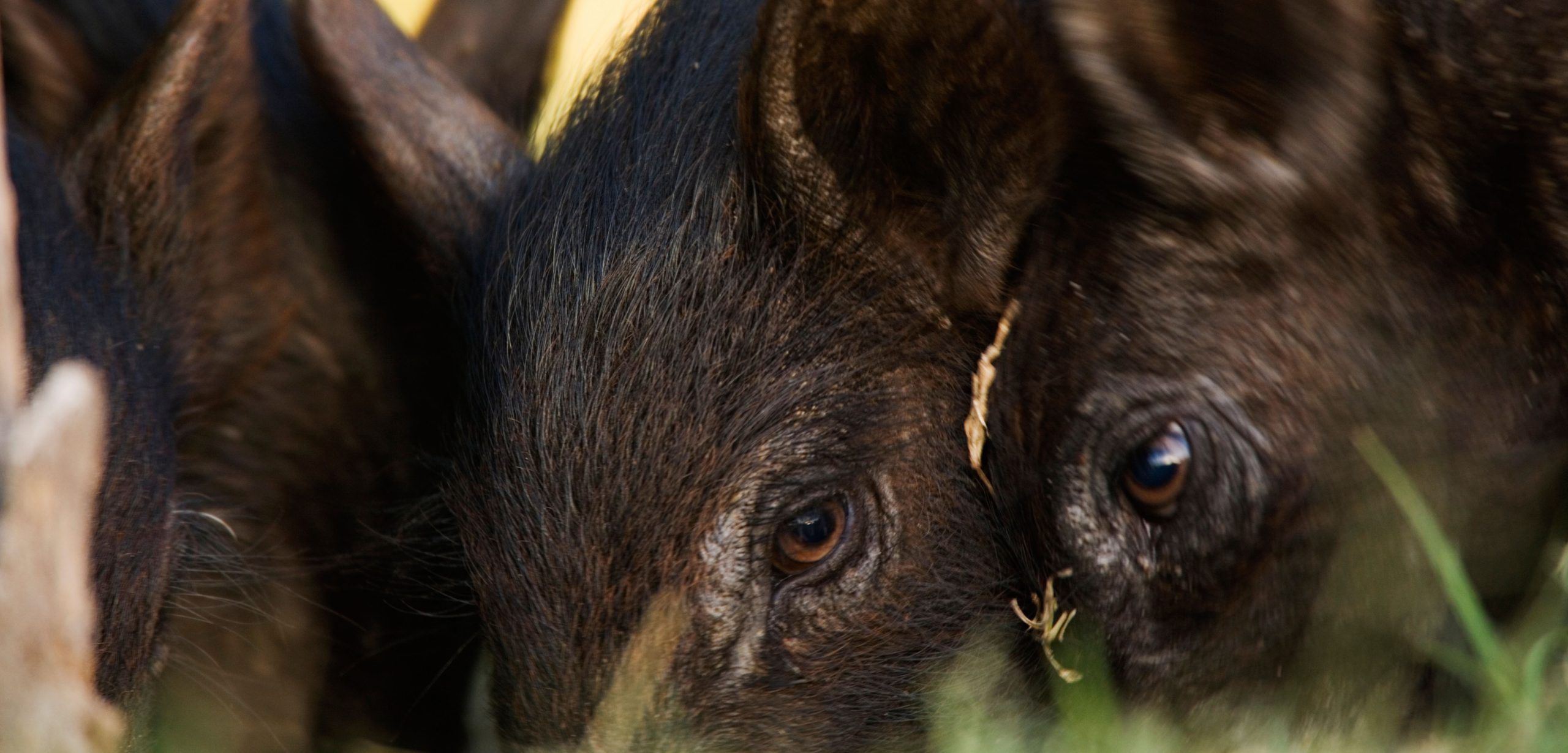Going Hog Wild in the Marsh
Scientists get muddy to study feral hogs’ effects on salt marshes.
Article body copy
Sean Sharp remembers fleeing down a dirt road from a pack of feral hogs. It was only a dream, but the vision had heft. Sharp was a first-year PhD candidate, and he spent much of his time isolated and alone, studying hogs on the southeastern United States’ remote barrier islands. He started bringing his dog with him into the field for company.
“I was the only thing out there, and I could imagine getting stranded,” Sharp says. And male hogs, with their sharp tusks, can be dangerous.
Sharp has spent the past three years on a quest to understand how feral hogs are affecting the fragile saltwater marshes that line much of the East and Gulf Coasts. And that effort is paying off. Sharp’s preliminary results now suggest that up to half the saltwater marshes in Florida have been damaged by hogs—a problem that has, until now, been largely overlooked.
Feral hogs have been an issue since the early days of European settlement. But most research has focused on inland areas. And this distinction matters, says Sharp.
“Feral hogs have been studied a lot in forest habitats, which are fairly static. But in salt marshes, you have a tidal cycle every day; you have rising sea level; you have a suite of human-caused disturbances. The ecosystem is really fragile,” he says. Add a destructive invasive species like the feral hog, he says, and you’ve got a recipe for disaster.

Researchers study a patch of terrain that had been damaged by feral hog rooting. Photo by Sean Sharp
At its core, the hog problem is similar in the forest and on the coast: hogs reproduce quickly, they have few natural predators, and they are indiscriminate diners.
“You can take pigs and dump them pretty much anywhere and they can survive and thrive,” says feral hog expert John Mayer, a biologist with the Savannah River National Laboratory in South Carolina. “They’ll eat anything they can get their mouth around—if it’s got a calorie in it and they can eat it, they will.”
Hogs cause trouble for salt marsh ecosystems in a number of ways, from eating vast amounts of crabs and mussels to spreading a variety of diseases to native wildlife. Sharp, however, has been focusing on how unruly hogs damage the soil and vegetation when they root and wallow with abandon.
As the project has grown, so too has Sharp’s team. His field trips now often include a small crew of colleagues and assistants.
The team has been pushing beyond simply documenting hogs’ impacts: they’ve also been tracking how the ecosystem may (or may not) recover. To do that effectively, Sharp and his colleagues have had to channel their inner pigs.

Sean Sharp (left) and a colleague use sheet metal to simulate wallowing damage. Photo by Ada Bersoza
To imitate hog wallows, Sharp’s crew used a high-tech piece of equipment: a pig-sized hunk of sheet metal. “We took it out there and laid it down in our plot, and then me and a couple other people would get on it and roll it around,” he says. “Wallowing in the mud is really hard work.” Using similar methods, they also re-created the damage caused by hogs’ rooting and trampling.
By going hog wild, Sharp’s team could record an accurate timeline of recovery. They found that sites where they had mimicked hogs’ foraging behavior had recovered almost completely after one year. But at the sites where they created wallows—places where hogs roll in the thick marsh mud to keep cool—the soil was so disturbed that the vegetation has yet to regrow.
As part of his surveys, Sharp collected data on what land features hogs tend to be associated with, and he’s spending the final year of his PhD assembling his data into a model that will help land managers predict where hogs are likely to spend the most time—information that will make ongoing efforts to trap and eliminate them more effective. Although Sharp is still eager to preserve the salt marsh ecosystem, he’s learned to appreciate his wild adversaries. “Pigs are really intelligent animals, and it’s a shame that we’ve put them in a situation where we now have to try to get rid of them,” he says.
But at least his fieldwork no longer gives him nightmares. “Despite the heat and the mud, it’s always fun,” he admits. “And you sure do get a good tan after a while.”
Some reporting for this story took place at the 2016 meeting of the Society of Wetland Scientists, which the author attended as a SWS Journalism Fellow.

